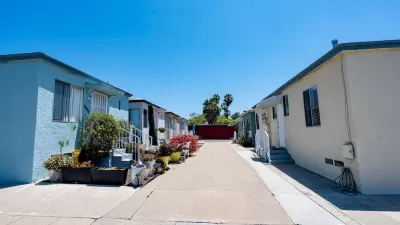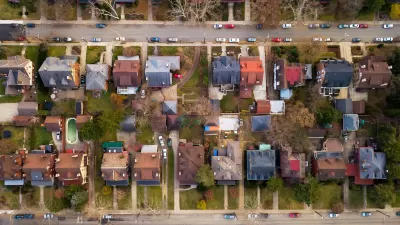The FY 2025 budget includes a new tax incentive, funding for affordable housing on state land, and support for adaptive reuse and ADUs.

New York Governor Kathy Hochul announced a package of policies aimed at stemming the housing crisis and improving affordability for renters and homeowners as part of the FY 2025 Enacted Budget.
According to a press release from the governor’s office, the package includes new tax incentives for development in New York City, new incentives for adaptive reuse, a $500 million capital fund for building housing on state-owned land, and new renter and homeowner protections. “For localities outside of New York City, the Budget includes an opt-in tax incentive program for mixed-income and 100 percent affordable new construction or conversion multifamily rental projects, and an incentive to create accessory dwelling units (ADUs).”
An article in Politico notes that the policy shift signals that politicians are feeling “the political weight of the growing crisis,” and that soaring costs are wearing down the city’s “trademark NIMBYism.” However, lawmakers backed away from a prior proposal to “force localities, particularly the suburbs around New York City, to grow their housing stock” in response to pressure from suburban groups.

Manufactured Crisis: Losing the Nation’s Largest Source of Unsubsidized Affordable Housing
Manufactured housing communities have long been an affordable housing option for millions of people living in the U.S., but that affordability is disappearing rapidly. How did we get here?

Americans May Be Stuck — But Why?
Americans are moving a lot less than they once did, and that is a problem. While Yoni Applebaum, in his highly-publicized article Stuck, gets the reasons badly wrong, it's still important to ask: why are we moving so much less than before?

Research Shows More Roads = More Driving
A national study shows, once again, that increasing road supply induces additional vehicle travel, particularly over the long run.

Judge Halts Enforcement of Anti-Homeless Laws in Grants Pass
The Oregon city will be barred from enforcing two ordinances that prosecute unhoused residents until it increases capacity and accessibility at designated camping sites.

Advancing Sustainability in Los Angeles County Schools
The Los Angeles County Office of Education’s Green Schools Symposium brings together educators, students, and experts to advance sustainability in schools through innovative design, climate resilience strategies, and collaborative learning.

Using Old Oil and Gas Wells for Green Energy Storage
Penn State researchers have found that repurposing abandoned oil and gas wells for geothermal-assisted compressed-air energy storage can boost efficiency, reduce environmental risks, and support clean energy and job transitions.
Urban Design for Planners 1: Software Tools
This six-course series explores essential urban design concepts using open source software and equips planners with the tools they need to participate fully in the urban design process.
Planning for Universal Design
Learn the tools for implementing Universal Design in planning regulations.
City of Moreno Valley
Institute for Housing and Urban Development Studies (IHS)
City of Grandview
Harvard GSD Executive Education
NYU Wagner Graduate School of Public Service
City of Cambridge, Maryland
Newport County Development Council: Connect Greater Newport





























